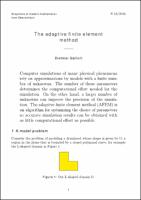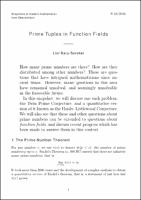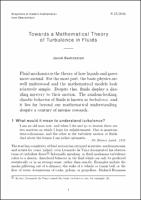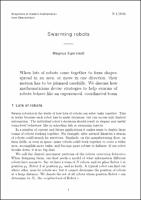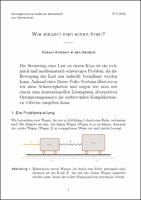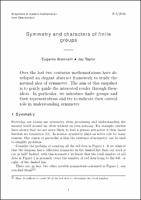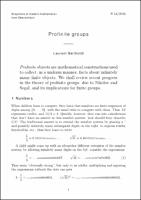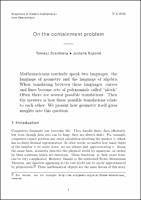Search
Now showing items 1-10 of 17
Fokus-Erkennung bei Epilepsiepatienten mithilfe moderner Verfahren der Zeitreihenanalyse
[SNAP-2016-008-DE] (Mathematisches Forschungsinstitut Oberwolfach, 2016)
Viele epileptische Anfälle entstehen in einer begrenzten Region im Gehirn, dem sogenannten Anfallsursprung. Eine chirurgische Entfernung dieser Region kann in vielen Fällen zu Anfallsfreiheit führen. Aus diesem Grund ist ...
The adaptive finite element method
[SNAP-2016-013-EN] (Mathematisches Forschungsinstitut Oberwolfach, 2016)
Computer simulations of many physical phenomena rely on approximations by models with a finite number of unknowns. The number of these parameters determines the computational effort needed for the simulation. On the other ...
Prime tuples in function fields
[SNAP-2016-010-EN] (Mathematisches Forschungsinstitut Oberwolfach, 2016)
How many prime numbers are there? How are they distributed among other numbers? These are questions that have intrigued mathematicians since ancient times. However, many questions in this area have remained unsolved, and ...
Footballs and donuts in four dimensions
[SNAP-2016-012-EN] (Mathematisches Forschungsinstitut Oberwolfach, 2016)
In this snapshot, we explore connections between the mathematical areas of counting and geometry by studying objects called simplicial complexes. We begin by exploring many familiar objects in our three dimensional world ...
Towards a Mathematical Theory of Turbulence in Fluids
[SNAP-2016-015-EN] (Mathematisches Forschungsinstitut Oberwolfach, 2016)
Fluid mechanics is the theory of how liquids and gases move around. For the most part, the basic physics are well understood and the mathematical models look relatively simple. Despite this, fluids display a dazzling mystery ...
Swarming robots
[SNAP-2016-001-EN] (Mathematisches Forschungsinstitut Oberwolfach, 2016)
When lots of robots come together to form shapes, spread in an area, or move in one direction, their motion has to be planned carefully. We discuss how mathematicians devise strategies to help swarms of robots behave like ...
Wie steuert man einen Kran?
[SNAP-2016-007-DE] (Mathematisches Forschungsinstitut Oberwolfach, 2016)
Die Steuerung einer Last an einem Kran ist ein technisch und mathematisch schwieriges Problem, da die Bewegung der Last nur indirekt beeinflusst werden kann. Anhand eines Masse-Feder-Systems illustrieren wir diese ...
Symmetry and characters of finite groups
[SNAP-2016-005-EN] (Mathematisches Forschungsinstitut Oberwolfach, 2016)
Over the last two centuries mathematicians have developed an elegant abstract framework to study the natural idea of symmetry. The aim of this snapshot is to gently guide the interested reader through these ideas. In ...
Profinite groups
[SNAP-2016-014-EN] (Mathematisches Forschungsinstitut Oberwolfach, 2016)
Profinite objects are mathematical constructions used to collect, in a uniform manner, facts about infinitely many finite objects. We shall review recent progress in the theory of profinite groups, due to Nikolov and Segal, ...
On the containment problem
[SNAP-2016-003-EN] (Mathematisches Forschungsinstitut Oberwolfach, 2016)
Mathematicians routinely speak two languages: the language of geometry and the language of algebra. When translating between these languages, curves and lines become sets of polynomials called “ideals”. Often there are ...


